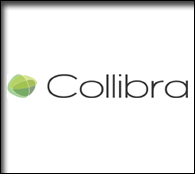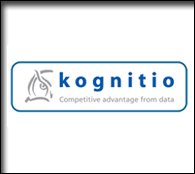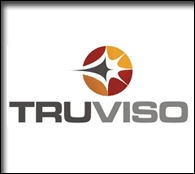Archive for March, 2008
Identity and Defrag
by Eric Norlin on Mar.28, 2008, under conference topics
One of the infrastructure puzzle-pieces for Defrag is identity. The reason is simple: having information sort itself to speed up the process of insight has an implicit need to know for whom that information is being sorted.
Identity, in fact, crosses a bunch of the topic intersections that we’re working on for Defrag: the semantic web, enterprise 2.0 stuff, the implicit web, the impact of social networking, etc. To be clear: I’m really not talking about identity in the “identity management” sense, but rather in the reputation, portable data, networking sense — ie, in the sense of all of the identity stuff that hasn’t been solved yet.
A few months back Brad and I were emailing back and forth about identity as a topic for Defrag, and I asked him “in what sense identity should be covered at Defrag.” Brad’s response: “in the ‘why is this area still so fucked’ sense.”
More recently, I sent an email out to last year’s attendees outlining some topics we’re thinking about this year. The responses I received all touched on wanting to explore how identity touches Defrag’s topics.
And then this morning, Brian Oberkirch points me to Own your identity - a new blog he’s got going with some folks to work on “owning your online identity in a world with an increasing amount of software that wants to own it for you.” The blog calls identity “the opposable thumb of the internet.”
Finally, this morning I’m reading Matthew Ingram’s blog: “If the news is important, it will find me.”
Throw that in a shaker, mix in some commenting, semantic structure, a collaborative environment, mash-ups, collective intelligence, discovery and plop an identity olive in it - and you’ve got a defrag-tini.
Twittering away and an update
by Eric Norlin on Mar.27, 2008, under sponsors
First, apologies for the light posting here as of late. I’ve developed a new Twitter addiction, which you can follow here.
Second, we’ve signed three great new sponsors up for Defrag this year:
blist: blist is the world’s easiest database. blist is all about discovering, sharing, publishing, distributing, and subscribing to data at home and at work.
coComment: coComment is a new service which allows you to enjoy the full potential of comment-based conversation on the web.
MindTouch: MindTouch develops a wiki and application platform for communities and enterprises and a wiki social media platform for online media and brands.
Welcome aboard guys!
Yet another “coming war” in IT
by Eric Norlin on Mar.19, 2008, under Uncategorized, defrag "theory"
I admit that I get a bit tired of the old “war” metaphor in all things IT. Yet, I did find this entry on “the end of software” rather interesting. Basically, the piece highlights how “social software” (enterprise 2.0y things) is getting bought by departments and functionaries that aren’t traditional IT buyers. Further, it goes on to say that this change in pattern is part of a larger trend that will forever alter how enterprises consume “software.”
Is it right? I’m not sure. But the movement itself seems indicative of the “consumerization of IT” wave, and something that is highly relevant to Defrag.
Heading into Defrag 2007, I was absolutely convinced that we’d be dropping the “end-user facing” angle and moving toward “enterprise stuff” (solely) by 2008. Let me be perfectly clear about this: I was FLAT OUT WRONG.
The attendees spoke very loudly and clearly about the fact that they wanted that “end-user” side to things — and not because they weren’t “enterprise people” looking to buy software -not at all. Rather, the motivation came from the fact that these “enterprise people” understood just how important viewing and understanding things which live on the “end-user” side is (plug: yes, we have the smartest group of people around gathering around this.)
These people “get it”; they know that its not what *they* purchase for the enterprise setting that matters, if all of the users (employees) are experiencing, using and even *buying* different things. They get that understanding the relationship between the end-user and enterprise silos is increasingly important. They understand that being familiar with technologies like Lijit or HiveLive can only increase their ability to do their jobs well (and how long is it, really, before someone in the enterprise is utilizing Lijit on internal Sharepoint driven-blog networks? Heck, maybe its already happening - lijit?).
So, the purchasing decision may be shifting and moving, but I don’t think its the shift and move that’s important (then again, I’m not an enterprise software salesman). What’s important is understanding how both realms influence each-other. That understanding leads to getting why “file-based” systems are so different from “people-based” systems. And those issues are something that every IT executive *needs* to wrap their head around yesterday.
For more on this topic, please check out Sam Lawrence’s blog.
There is a point where the future meets the present, and its precisely in discussions like this. Welcome to Defrag.
Knowledge networking and ambient intimacy
by Eric Norlin on Mar.19, 2008, under conference topics, general
Last year, Leisa Reichelt coined a term that I loved: “ambient intimacy.” Leisa was trying to describe how services like Twitter help people to know their cohorts better simply by virtue of following their tweets. Think of it this way: if we worked in a office together, you’d know that I drink my coffee black, went to lunch at X restaurant and listen to Tupac Shakur at an obsence volume as I pull into the parking garage at 6am. Which is to say, you just know things about “me” that help us relate better.
Perry Mizota has taken that idea and started to blend it with something he calls knowledge networking. Perry describes knowledge networking as “the ability for people to connect with the purpose of leveraging each other’s knowledge.” I read that and said, “heck that’s Defrag!” ![]()
There truly is something to the idea that we can build tools that help to “mine” our shared knowledge more efficiently. Some of these tools make the implicit explicit and some make the explicit implicit — but in all cases, they walk across that barrier.
I’ve asked Perry to help flesh out this idea for this year’s Defrag, and can’t wait to see where it goes.
As a sidenote: I’ve started to get a lot of PR companies contacting me about “speaker submissions.” We don’t do a “call for papers” - I mean, what are we, impersonal? Nope. Instead, I really love to engage with folks around things they’re writing and thinking about, and let nature run its course. Bottom line: write a blog post and let’s talk. ![]()
Getting to know you
by Eric Norlin on Mar.13, 2008, under conference topics
Probably one of the most fun things I get to do is start “exploring the content” for Defrag. This usually involves a ton of phone calls and conversations with all different sorts of folks, and then evolves into emails with the advisory board, and then explodes into some mess that eventually ends up working. ![]()
I’ve been talking with companies like Blist, Kapow Technologies, Sphere, Yugma, Cisco, Xpree, Liquid Planner, Collective Intellect, Salesforce.com; RSS companies, semantic companies, collaboration companies, predictive markets companies, etc — gathering ideas and throwing things around.
And some first bits of “high level stuff to talk about at Defrag” are starting to emerge. Things like:
Users connecting the dots - making the unstructured structured
The Democratization of Data
Using collective intelligence for social media marketing
Can identity become a filter for information overload?
Will crowd-sourcing accelerate decision making? And are those decisions any good?
Harnessing the Implicit Value of the Social Graph
Building apps implicitly: A real mash-up story (that doesn’t involve Google Maps)
Finding serendipitous information through context
…just the beginning. Ideas for me on this stuff (or other Defraggy topics)? I wanna hear it all. enorlin — AT — mac.com.
P.S.: I’m still a ways from speakers, draft agendas and all of that — which is good since November is still a ways off…..but I love starting these conversations early.
On Community-driven tech conferences
by Eric Norlin on Mar.12, 2008, under general
Prelude: Please know that everything I’m about to say should only be applied to tech conferences - because that’s all that I know. Also know, that I consider “conferences” to be quite different from “expos,” and since I’ve never run an expo, I wouldn’t apply any of the following to that either. Okay, enough prelude…
It seems that once every year I end up either having a major conversation or writing something about how I view tech conferences. Is that because I’m some vaunted guru of tech conferences? Hell no. I’ve been around them (running, owning, working on) since 1999, and I’ve had success and failure. And through it all I’d like to think I’ve learned some things.
The recent “lacy/zuckerberg incident” (can we puh-lease stop talking about this?) has now led to the inevitable spate of articles about conferences. Some of which are good and some of which are bad, but all of which, I think, are missing some essential points. This has led me to the position of pontification that you find me in this morning.
First, there are essentially two kinds of tech conferences: community-driven tech conferences and (for lack of a better term) lead generation tech conferences. Neither of these types of tech conferences are in and of themselves *bad*, but they do serve distinctly different marketplaces, and they are heading in distinctly different directions.
Let me begin with “lead generation tech conferences”:
We all know them. They’re organized by companies. And their basic purpose is to “put butts in the seats” that they can then serve up to their sponsors as leads. Now, to be clear, ALL conferences eventually (as markets mature) become tools for either lead generation or some large “branding” effort, but the key differentiator of “lead generation tech conferences” is that they, in their heart of hearts, believe that the vendors (the people that buy sponsorships) are their customers. Its not that they don’t care about attendees or content, its just that at the end of the day, they’re organized to see the vendor as their primary customer. This stance, by the way, puts them closer to “expos” in how they view their business. (Expos clearly see the vendors as their customer.)
Community-driven tech conferences, on the other hand, recognize that their primary customer is the attendee. This is not to say that community-driven customers don’t see vendors as their “secondary” customer -after all, they’re an integral part of how a conference succeeds. But, and this is often hard for vendors to understand, for a community-driven conference to succeed it *must* see the attendee as the primary customer. After all, if the attendees aren’t there, then what difference does a sponsor make?
Further, community-driven tech conferences (that at some level recognize the importance of the attendee) can then be sub-divided into what I would see as ones that are succeeding and ones that are failing. And I measure that (success/failure) on one metric and one metric alone: engagement. Is your community “engaged” with the conference? All of this leads to the number one reason that I like to start community-driven tech conferences: there’s a big problem-set that hasn’t yet formed a cohesive community. Is the conference the one solution? Of course not. It is a part. And it can be an important part.
So, “engagement”:
Last year, when I decided we’d have some unconference/open space format in the middle of Defrag, I had someone tell me that the attendees wouldn’t take kindly to having to “sit back down and listen.” My response was simple: GREAT! I want people there that know that the conversation is not about passively listening to what’s on stage. (sidenote: there is, of course, a difference between being active in a discussion and being rude. we’re all adults, right?)
Rule #1 of engagement: you (and by “you” I mean the organizer, speakers, panelists, whatever) are not smarter than your “audience.” In fact, conference content should really just be the spur that kicks the ass of the horse known as conversation.
Rule #2: Don’t be afraid of your attendees. Value them. Embrace them. Someone told me that we need a twitter stream monitor running during Defrag - great, wonderful, can do. Will that upset the speakers? Only if they’re not the right kind of speakers for Defrag. In this context, the word “attendee” starts to get misleading. Its more like there are a bunch of “conversations” that you’re gathering. If your speakers aren’t ready for it, its because you (as the conference organizer) did a bad job of prepping them.
Rule #3: Have a vision of what you want. Corollary: growing in size of attendance and sponsor dollars is NOT a vision. When I “dream” of what I want Defrag to be eventually, I don’t dream of dollars. I dream of how the people that are there are energized, engaged and enthusiastic. That “dream” needs to get specific and be maintained. Example: Defrag will never (as long as I’m breathing and running it) go over 500 people. Reason: Simple - you lose the intimate nature of the networking. Does this shut me down from certain revenue possibilities? You bet it does. Did I make that choice knowing this? Sure did. And why, as a guy who does this for a living would I do that? Having a vision. When a conference gets excited about “blowing out their attendance number”, and having to “increase space” - ask yourself if they’ve thought about the vision. Is there a size limit for what people want? Sometimes. Its circumstance specific. But it is the job of the conference organizer to think about that circumstance well ahead of time.
Rule #4: The single most important thing you can ever do with attendees is listen. You should also listen to your sponsors, but you have to be much more careful with that kind of listening. If you’re not, you’ll end up stuck with a conference that the sponsors want and the attendees don’t care about. Remember: Vendors do NOT always know what’s best for them. I mean that in the sense that when you’re heads-down, fighting to succeed as a tech vendor, it gets VERY hard to see the forest for the trees. One of the great things conferences can do for vendors is help them to jiggle their thinking a bit; shake some assumptions; view things differently. Search out vendors wanting that. Listen to them. Listen to your attendees 4x as much.
Okay, enough rules….
What’s it all mean?
I think that community-driven tech conferences are the way to go (clearly). And I think that there’s a wide open market for all kinds - unconferences, more traditional formats, conversational tones, etc. I’m not a fundamentalist on this (beware of fundamentalism) - it really is about “knowing your market” and tailoring things to suit that best.
Further, I think there’s a very interesting thing happening in community-driven tech conferences that has to do with the niche media. Tech conferences with knowable people attached are doing better (over the long run) than faceless conferences. Examples:
Web 2.0 summit: Batelle and O’Reilly
PC Forum: Esther Dyson
DEMO: Chris Shipley
Lockergnome: Chris Pirillo
Money:Tech: Paul Kedrosky
…and, of course, Defrag. ![]()
When I say “doing better,” I mean that their level of engagement is far outweighing shows that are A) topic driven with B) no discernible person engaged with the conference community on a year round basis. These kinds of shows are numerous and (yawn) not so much fun.
Lastly, there are now articles being written about how social media is allowing “the people” to “take over” the conference. WE SHOULD ONLY BE SO LUCKY. Do I want Defrag attendees to take over the conference? You’re damn right I do. Attendees at PC Forum knew they were part of the community. They came because Esther (and Daphne) cared - about them, about the setting, about the conversations, about everything. It was not a job. It was a passion.
Look for that in the next conference you decide to attend, and you’ll find a conference that you’ll enjoy growing with…..not just “attending.”
[eric steps off of soapbox and resumes planning for Defrag 2008. Amen.]
Tweaks and Twits
by Eric Norlin on Mar.07, 2008, under general
We’ve done some tweaking of the Defrag website…you can see the result here.
Also, if you’ve noticed a lack of regular blogging here, it is only because I’ve taken up Twittering for Defrag. Will I figure out how to do both simultaneously? Probably. Maybe. Eventually. ![]()









